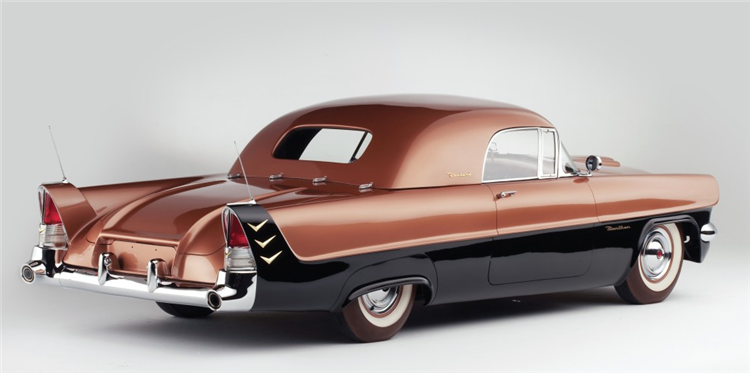Formed in 1899, Packard emerged as one of the top producers of high-end automobiles in the United States. The corporation fared well financially during World War II and the Great Depression, but things took a turn for the worst in the 1950s. The majority of independent automakers combined in order to save expenses as they faced a fierce competition from Ford and GM, who were lowering prices and pressuring dealers to buy automobiles. In 1953, Nash and Hudson combined to form American Motors Corporation (AMC), and Willys and Kaiser joined together to form Kaiser-Willys. To establish the Studebaker-Packard Corporation, Packard acquired Studebaker in 1954.
Before that happened, Packard designed and showcased the Panther, one of its greatest and most innovative concept cars. Also known as the Daytona, the Panther was part of a series of prototypes that Packard developed during the “dream car” craze of the 1950s. It all started with the Pan-American, a concept car that Packard first showcased at the 1952 New York Auto Show. Based on the Series 250, the Pan-American cost Packard around $10,000 to build.
The company made six cars, but the Pan-American did not go into full production. But it did inspire the iconic Caribbean, which arrived in 1953.

Not long after the Caribbean was first introduced, Packard designed a prototype drop-top called the Balboa. It made its debut with a rear window that was tilted in reverse and could be lowered for ventilation; Mercury first used this feature on a production vehicle in 1957.
James Nance, the president of Packard, ordered the Pather in the middle of 1953. Less than a year was given to the company’s designers and engineers to complete the automobile in time for the Daytona Speed Week in early 1954, as per his desire.
Amazingly enough, the new concept car was ready in time for the event. But unlike the Pan-American and the Balboa, the Panther had more than just a unique design to showcase: it featured a one-piece fiberglass body. Granted, Chevrolet and Kaiser had already showcased fiberglass sports cars by then (the Corvette and Darrin), but Packard was the first automaker to build a full-size car from this lightweight material.
On top of that, the Panther’s body was bonded into a one-piece molding, an innovative idea at the time. The body was fabricated by Mitchell-Bentley and Creative Industries. Design-wise, the Panther wasn’t radically different from the Packards that were available in showrooms at the time. But it featured a larger-than-usual front grille and a bubble-top roof with extremely wide B-pillars.
The low stance and the two-tone paint job made the Panther appear sleeker than other vehicles of similar size. Some of the cars were later modified to include the cathedral-style taillights that Packard introduced in 1955.

And yes, I said “cars.” Packard made more than one Panther. Although the nameplate never made it into production, the company put together four cars. Following an initial pair of Panthers that it made for the 1954 auto show tour, Packard built a second pair for Don Mitchell of Mitchell-Bentley and Rick Terry of Creative Industries. One of them was a convertible, while the other featured a removable hardtop.
Under the hood, the Panther featured Packard’s regular-production 359-cubic-inch (5.9-liter) straight-eight. That’s mostly because the company’s V8 was still under development at the time. However, the first couple of Panthers also got a McCulloch supercharger, which increased output to 275 horsepower. An impressive figure for the era, it enabled the Panther to hit 131 mph (211 kph) at Daytona Beach.
Sadly, Packard’s purchase of Studebaker led to serious financial issues, and the project was halted despite encouraging signals from dealers and possible purchasers. By the year 2022, the Panther has largely been forgotten about Packard’s past. But at auto shows and auctions, its distinctive build, rarity, and stylish appearance make it a focal point.
While not as valuable as the iconic Packard Twelve, known to fetch more than $3 million in Excellent condition, a Panther is probably worth at least $1 million nowadays. In 2013, the last time a Panther hit the auction block, it changed hands for $850,000. In 2009, a different Panther sold for $700,000.
